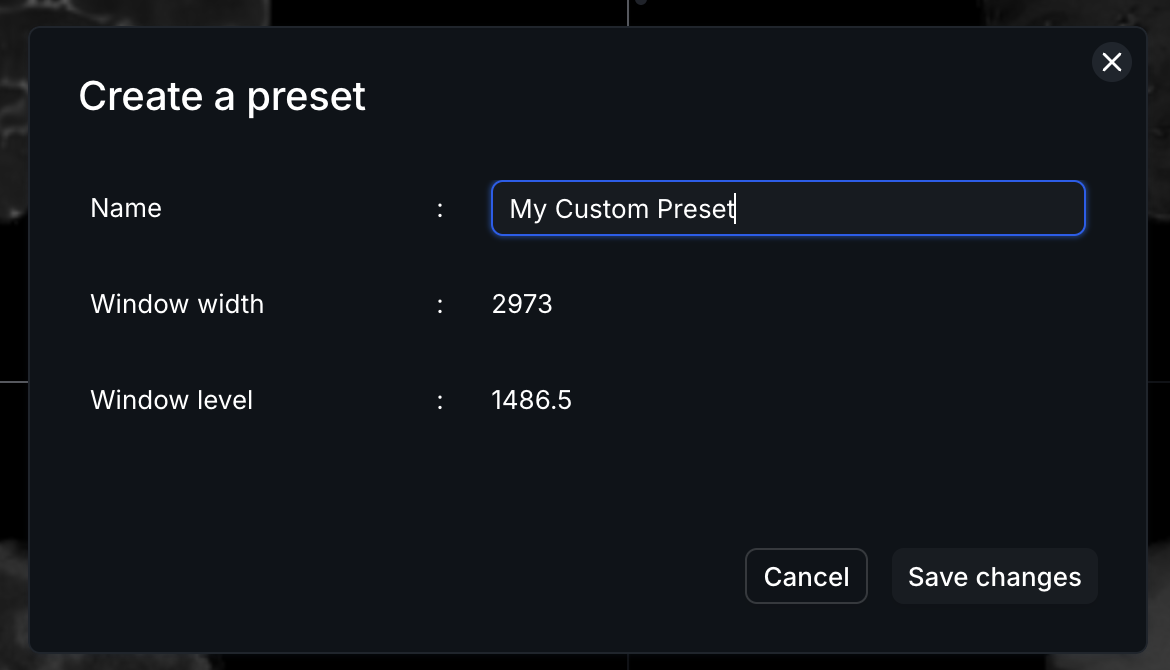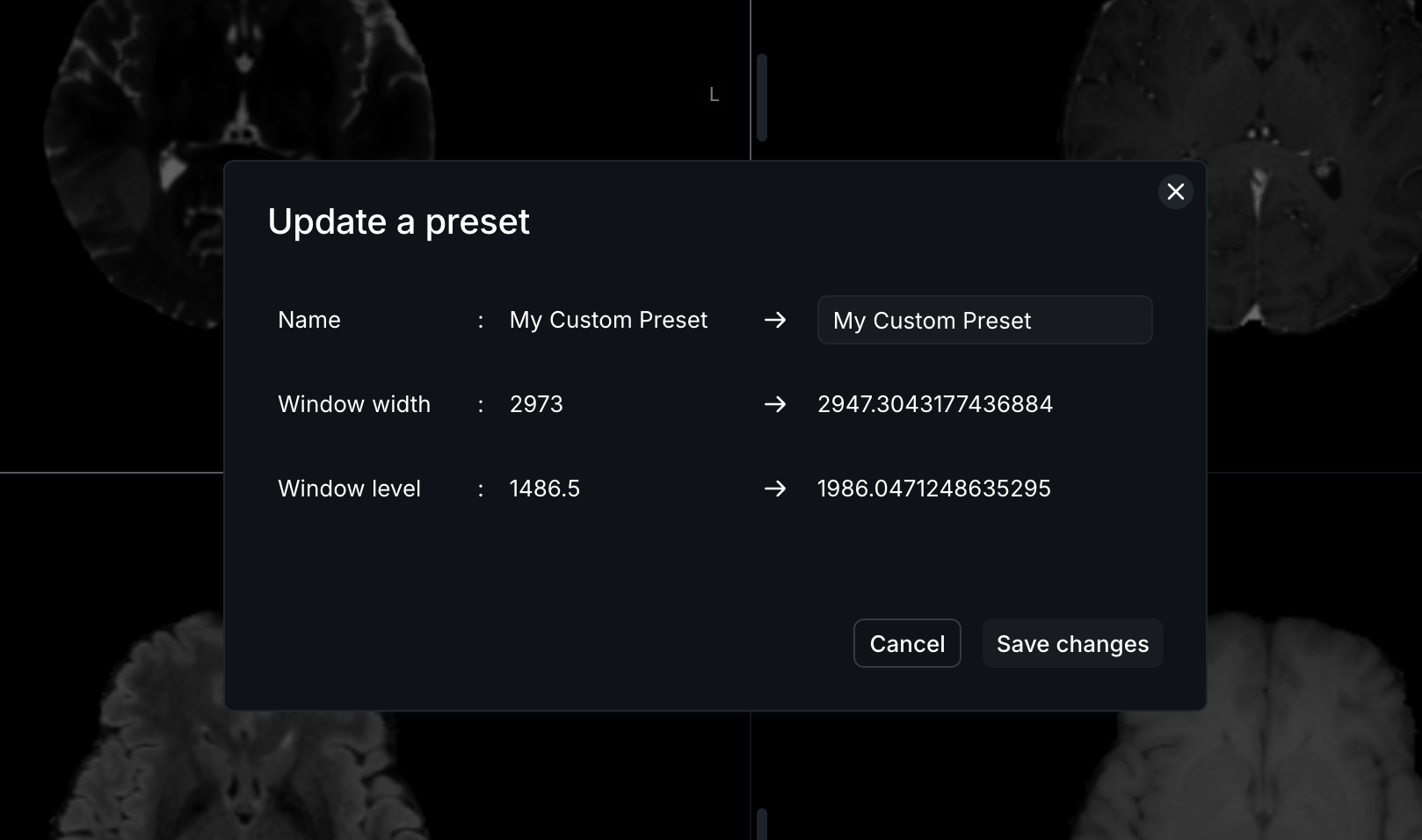CTRL and LEFT CLICK dragging on any viewport - up/down to adjust Window Level, left/right to adjust Window Width.
You see and/or modify the current Visualization settings by selecting the Visualization Panel on the top right of the tool bar.
When the Visualization Panel is open, its settings will display in the right hand Context Panel:
- Window Width
- Window Level
- Optional Presets
- Inverted View
- Pixel Interpolation
- Label Opacity
- Label Outlines
Custom Windowing Presets
You can set custom presets for windowing settings and set custom keyboard shortcuts for them within the RedBrick Annotation Tool. All custom keyboard shortcuts can be configured and referenced on the User Preferences page.Creating a Custom Windowing Preset
First, set your Windowing Width and Level to the desired values. Then, click on Select a preset and then Create a preset within the Visualization Panel.
Creating a custom preset

Naming a custom preset
Modifying an Existing Custom Preset
To update a custom preset:- set the desired Windowing Width and Level values
- in the Visualization Panel, open the presets dropdown
- click on the three-dot menu next to the custom preset you wish to modify
- select Update preset

Updating a custom preset
Deleting a Custom Preset
To delete a custom preset:- in the Visualization Panel, open the Presets dropdown
- click on the three-dot menu next to the custom preset you wish to delete
- select Delete preset
Masking
The Masking Panel consists of the following elements:- Editable Area dropdown
- Modify Other Segments dropdown
- Restrict by pixel intensity toggle
- Masking Range slider
- Threshold Range Selector
Editable Area
The Editable Area dropdown has two selections - Everywhere and Inside all segments. Selecting Everywhere allows you to draw on any part of the canvas. Selecting Inside all segments makes it impossible for the user to annotate on an unannotated area of the canvas. In other words, the user must annotate within the bounds of an existing annotation.Modify Other Segments
The Modify Other Segments dropdown helps you control how your painting affects other existing annotations. Selecting Overlap will allow you to paint on top of other annotations. This process is additive, which means annotating with Overlap does not alter or delete other annotations. Selecting Overwrite unlocked segments will also allow you to paint on top of other annotations, but you will overwrite (and therefore delete) anything else that you paint on top of. For a visual walkthrough of how to configure Editable Area and Modify Other Segments settings, as well as a demonstration of the differences between them, please see the following video tutorial:left click any part of a viewport to include it in the range or right click to exclude it from the range.

